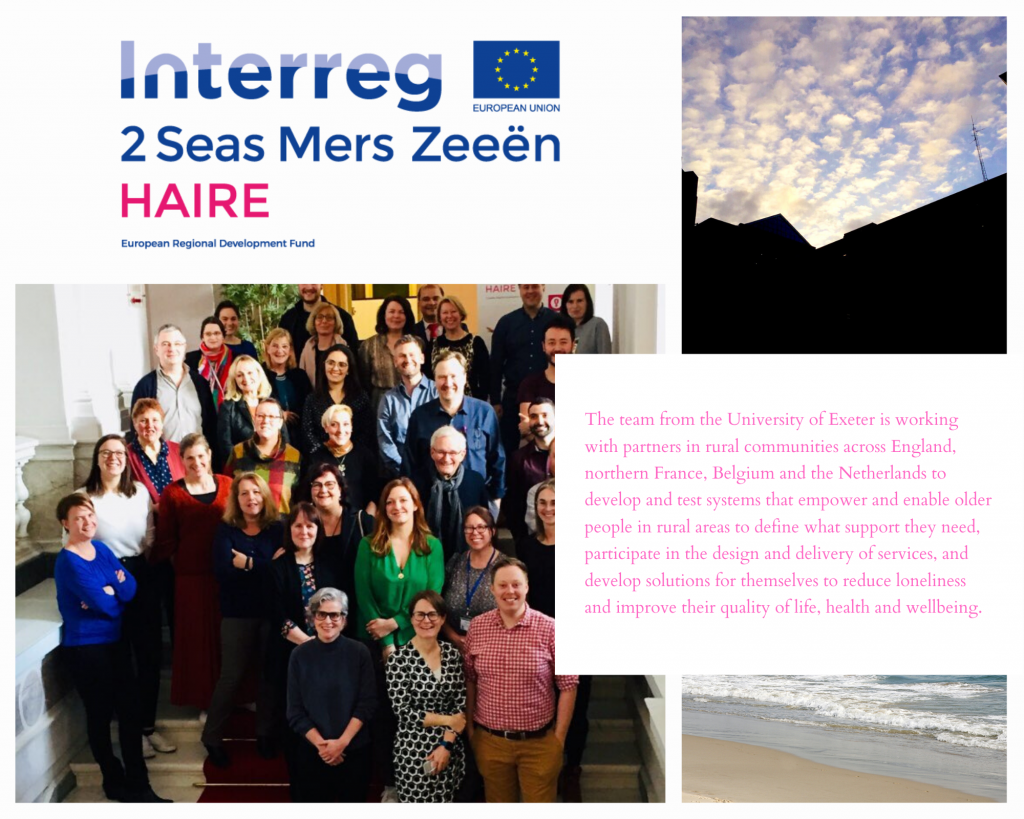A year ago on 10th February, 2020, the fledgling HAIRE team sat down to eat together in a little bistro in Lille to celebrate the launch of the project, Healthy Ageing through Innovation in Rural Europe. It almost seems decadent in retrospect. No-one could have predicted the year that was to follow and the difficulties the world would face in the throes of a global pandemic.
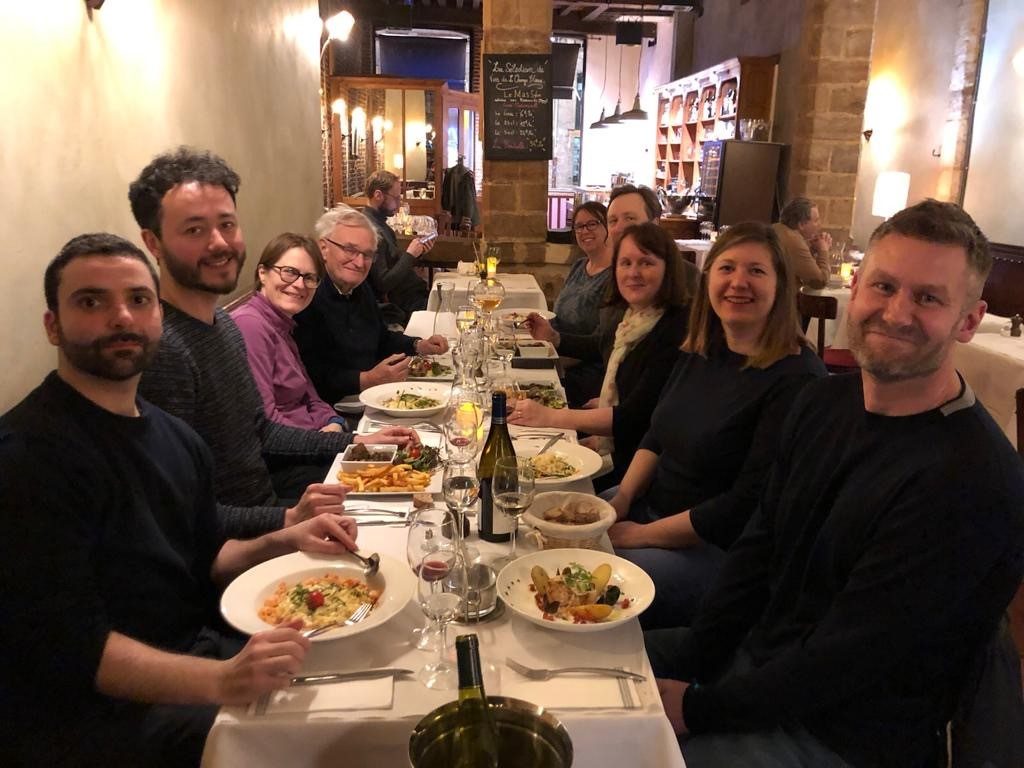
Covid-19 struck at the heart of our target group, exacerbating the very problems HAIRE had been designed to address. Not only was access to health and wellbeing services made more difficult, our already vulnerable target suffered increased loneliness and isolation in many cases. Face to face interviews (HAIRE’s Guided Conversations) could not go ahead as originally planned. As Europe-wide lockdowns took hold, alternative methods to talk to older people had to be found, and fast.
Our first challenge was to secure a remote simultaneous interpretation platform so that we could easily talk to all of our European partners online. Thanks to everyone working together to find solutions, the Guided Conversations – the technique used to establish older people’s needs and desires – were adapted to take place virtually or by telephone according to participant and volunteer comfort. Crucially, they evolved with the unique situation in every locality. HAIRE’s place-based, person-centred approach was (and continues to be) carefully managed at every step of the toolkit adaptation, from content planning to execution. One of the features of the toolkit is the use of a site-specific image to help participants articulate their needs and desires in relation to both interior and exterior spaces. This co-design work involved all partners and brought about a deeper understanding of each others’ localities.
It is a testament to their commitment that throughout 2020 each partner continued to be fully engaged in the project despite Covid-19 obligations in their country. East Sussex County Council and Rother Voluntary Action hosted several online HAIRE-branded community talks for an Ageing Well festival, which other partners attended as well.
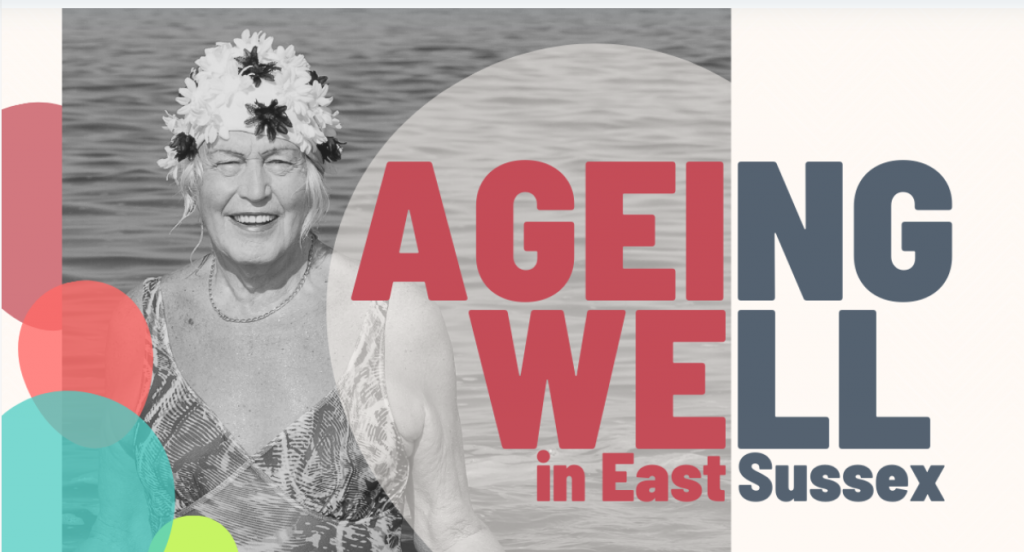
The level of every partner’s commitment has not waned even though each partner has had to flex their approach to other HAIRE activities and information gathering, such as the Neighbourhood Analysis and community reports. (These elements of the toolkit establish the extent and nature of individual social networks and connections, and what opportunities, such as activities and services, are available to participants in each community.) There too, partners have helped each other find workarounds and helped problem solve for each other in order to gather the data.
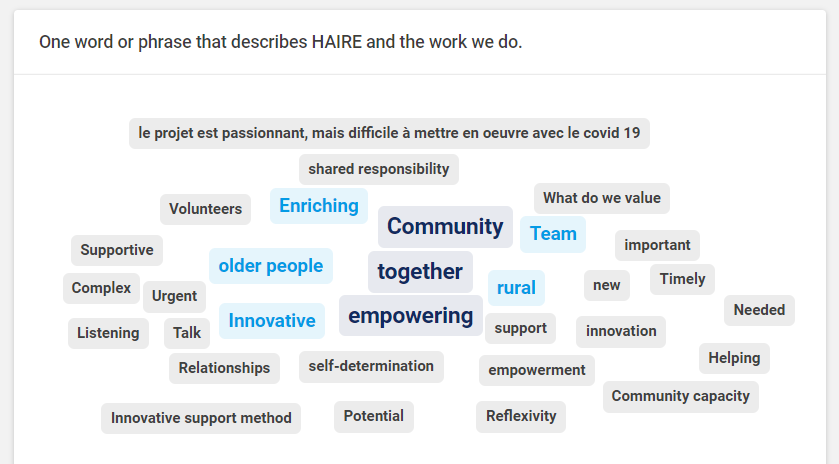
In our most recent partnership meeting, we used Sli.Do to ask partners for one word that describes the work of HAIRE. As the word bubble took shape, three words stood out: Empowering Community Together. So it is perhaps not surprising that, despite Covid-19 lockdowns and limited face to face contact with older people, we have overachieved on Enabler recruitment. Enablers are the volunteers and health professionals who are trained to use the HAIRE toolkit and conduct interviews with older people. We had an original recruitment target of 80 Enablers – and we now have 147, with 115 of them trained so far. And despite delays, we are on track to achieve 600 participants for the Guided Conversations: we have 282 recruited participants, with 126 having already started their conversations.
 HAIRE is being designed with future users and sustainability in mind. Partners are already presenting the project to potential future users of the toolkit. In the UK, Devon Mind has introduced HAIRE and the team to CoLab Exeter, a cross-sector, multi-agency co-working hub that is home to some 35 different projects and services that work collaboratively. Other conversations have taken place between Sussex County Council, Rother Voluntary Action and Hastings Borough Council.
HAIRE is being designed with future users and sustainability in mind. Partners are already presenting the project to potential future users of the toolkit. In the UK, Devon Mind has introduced HAIRE and the team to CoLab Exeter, a cross-sector, multi-agency co-working hub that is home to some 35 different projects and services that work collaboratively. Other conversations have taken place between Sussex County Council, Rother Voluntary Action and Hastings Borough Council.
Across the 2Seas region, our partners have been talking to local governments’ social services departments; in Belgium, conversations have taken place with the Province of Antwerp and LiCalab (Living and Care Lab). In France, the University of Artois has developed a partnership with 30+ organisations in their area, called ‘Cluster Senior’; our French partners have also connected with the Interreg Project TICC, led by Buurtzorg. Pilot sites in all countries have been in regular contact with their Observer Partners. In total, the HAIRE partnership has engaged over 350 local groups, voluntary groups and a variety of organisations.
The transferability of HAIRE is not just geographic but also crosses sector boundaries to unexpected targets: we are seeing opportunities for its person-centred approach to be applied widely, e.g. tackling homelessness and drug addiction. 2021 and beyond may be a tough road for many communities. We are confident that HAIRE will not only rise to the challenge, but will also offer solutions and tools for communities to thrive beyond this pandemic.
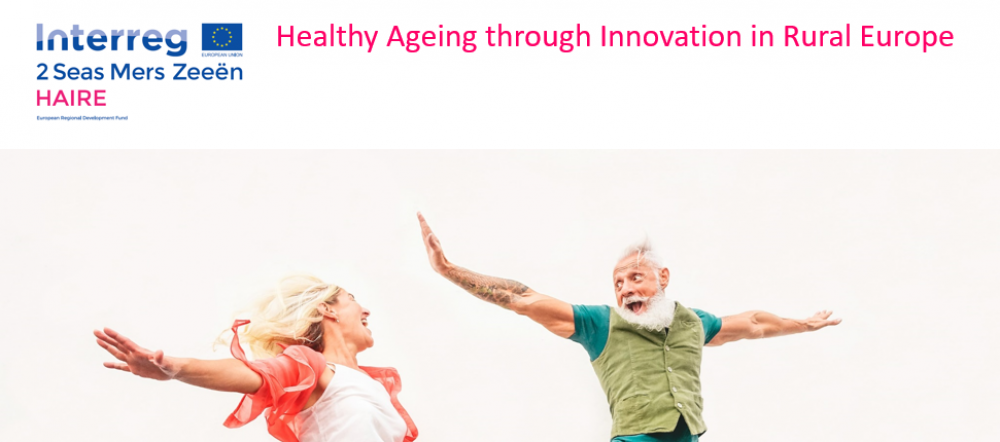

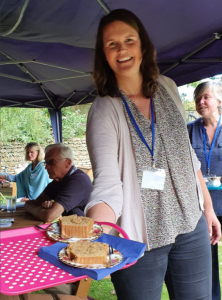
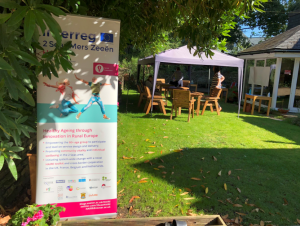
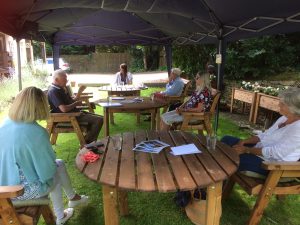
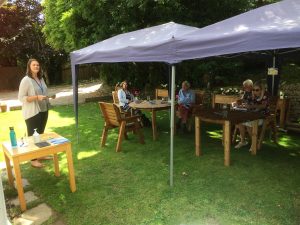 Feock’s HAIRE Project Co-ordinator and Administration Assistant, Bex and Esther, put the session together. Bex put a flip chart on the glass windows of the cafe and the analysis began. This is a tool developed by our Dutch partners at Solidarity University and will be used by all the pilot sites in the HAIRE project. It involves the creation of a “rich picture” in words through brainstorming and mapping the neighbourhood. People were asked to talk about:
Feock’s HAIRE Project Co-ordinator and Administration Assistant, Bex and Esther, put the session together. Bex put a flip chart on the glass windows of the cafe and the analysis began. This is a tool developed by our Dutch partners at Solidarity University and will be used by all the pilot sites in the HAIRE project. It involves the creation of a “rich picture” in words through brainstorming and mapping the neighbourhood. People were asked to talk about: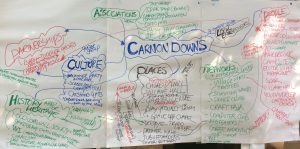
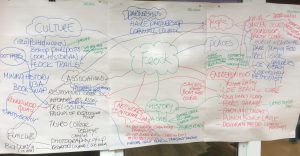
 There are many individuals who support others in the parish of Feock already. The trust and relationships within the community are important to recognise. This exercise helped us gain an understanding into these relationships as well. Questions and comments flowed, and during a break, people asked more questions about the project and chatted about local planning, who was moving into the area and other local issues.
There are many individuals who support others in the parish of Feock already. The trust and relationships within the community are important to recognise. This exercise helped us gain an understanding into these relationships as well. Questions and comments flowed, and during a break, people asked more questions about the project and chatted about local planning, who was moving into the area and other local issues.






